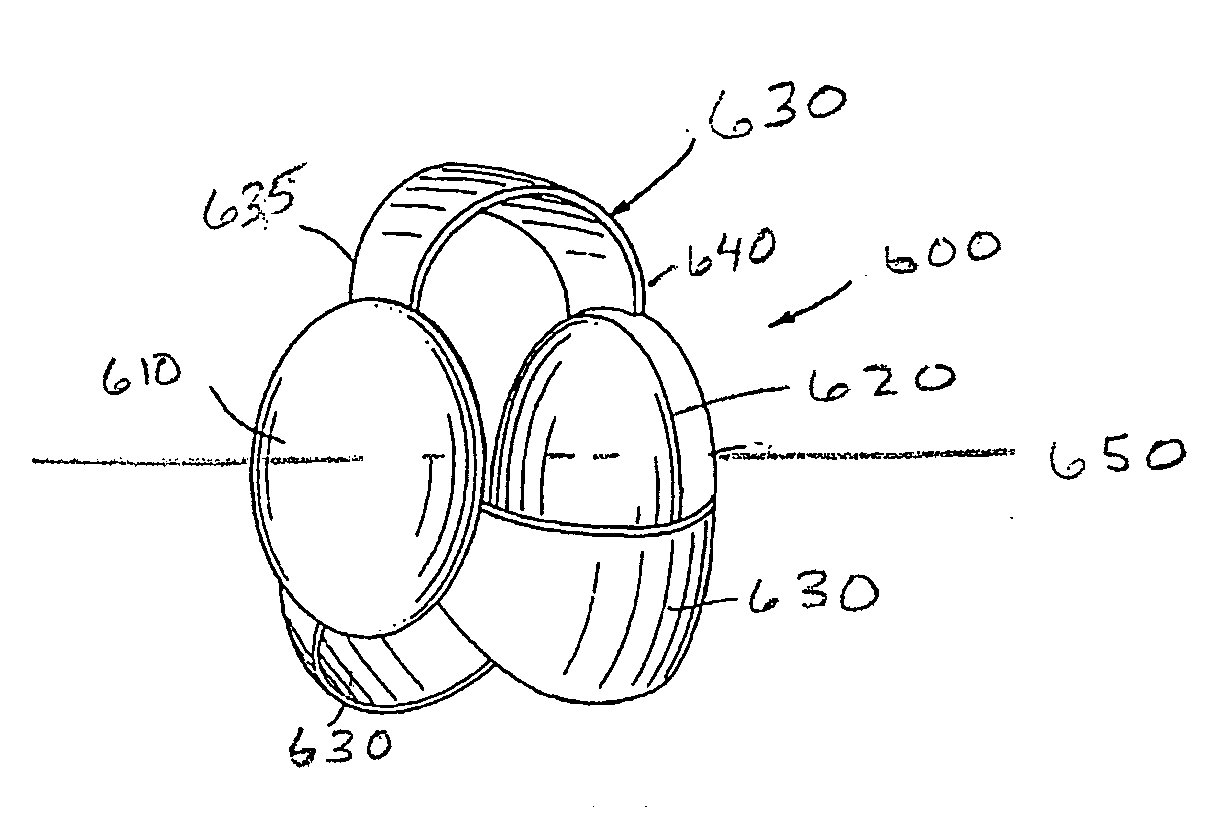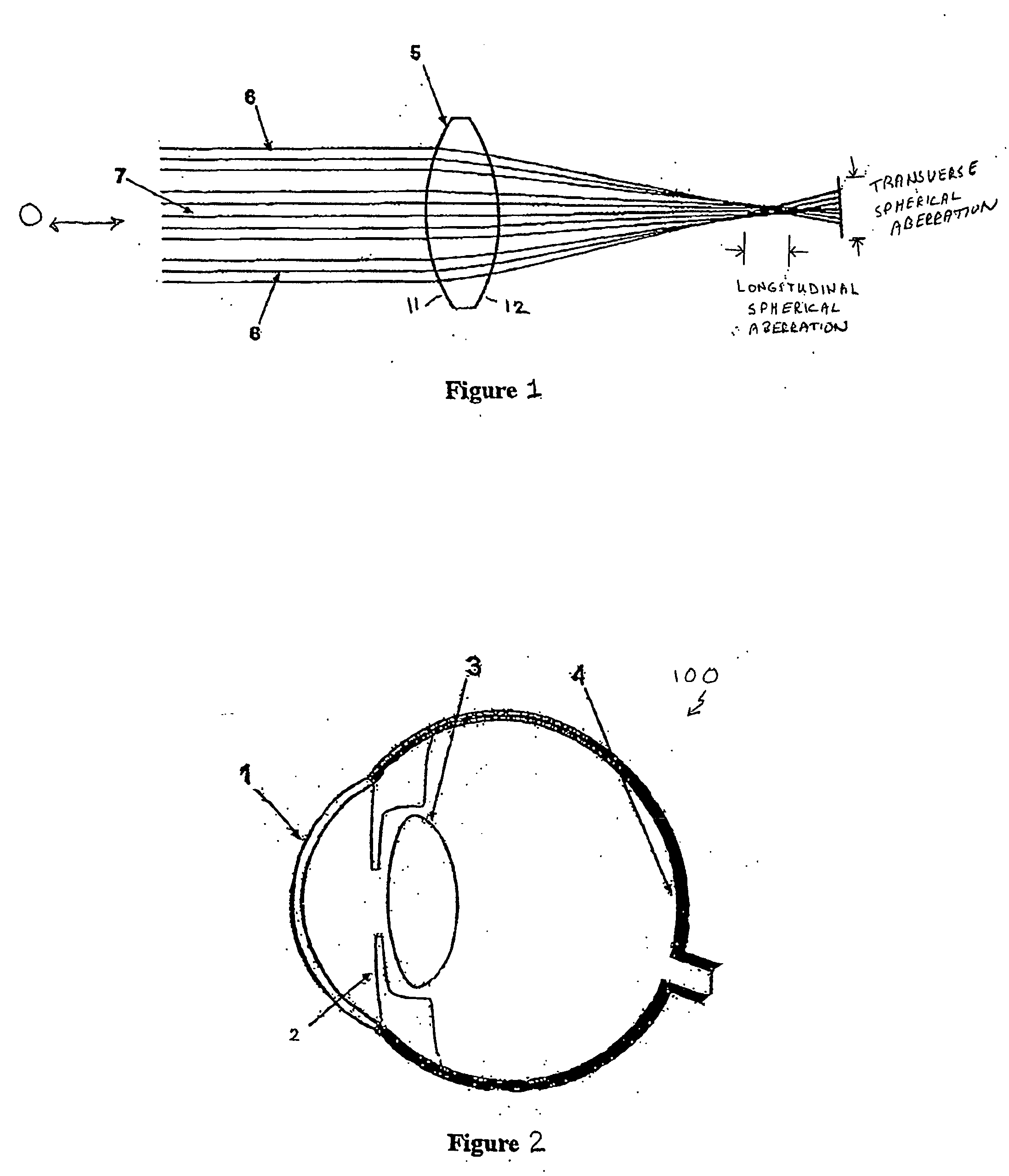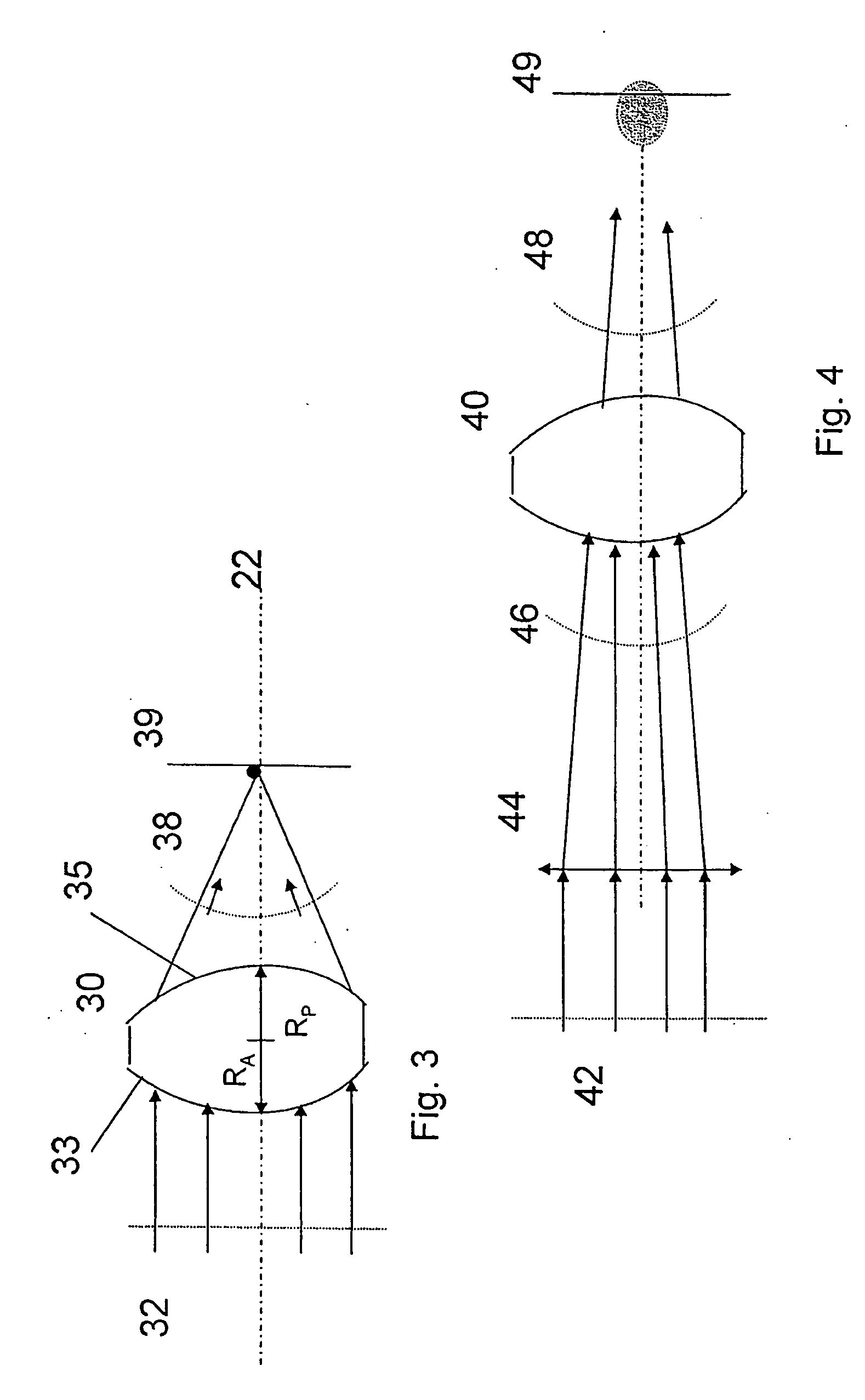Aspheric lenses and lens family
- Summary
- Abstract
- Description
- Claims
- Application Information
AI Technical Summary
Benefits of technology
Problems solved by technology
Method used
Image
Examples
Embodiment Construction
[0052] Embodiments of the invention described below relate to an aspheric lens for use in an optical system, in which the lens has physical and optical characteristics that control the spherical aberration in a wavefront passing through the lens. For the reader's clarity, the lens will be described in terms of an intraocular lens (IOL) for use in a human ocular system. In particular, the ocular system will be a pseudophakic ocular system; that is, an ocular system in which the natural crystalline lens has been removed and replaced with an implanted IOL. It is to be recognized, however, that the various embodiments of the invention apply to a phakic IOL system in which the natural crystalline lens of the ocular system has not been removed. Most generally, embodiments of the invention are directed to an aspheric lens for use in an optical system, in which the lens is designed to control spherical aberration. As used herein, the term aspheric lens refers to a lens having at least one a...
PUM
 Login to View More
Login to View More Abstract
Description
Claims
Application Information
 Login to View More
Login to View More - R&D
- Intellectual Property
- Life Sciences
- Materials
- Tech Scout
- Unparalleled Data Quality
- Higher Quality Content
- 60% Fewer Hallucinations
Browse by: Latest US Patents, China's latest patents, Technical Efficacy Thesaurus, Application Domain, Technology Topic, Popular Technical Reports.
© 2025 PatSnap. All rights reserved.Legal|Privacy policy|Modern Slavery Act Transparency Statement|Sitemap|About US| Contact US: help@patsnap.com



